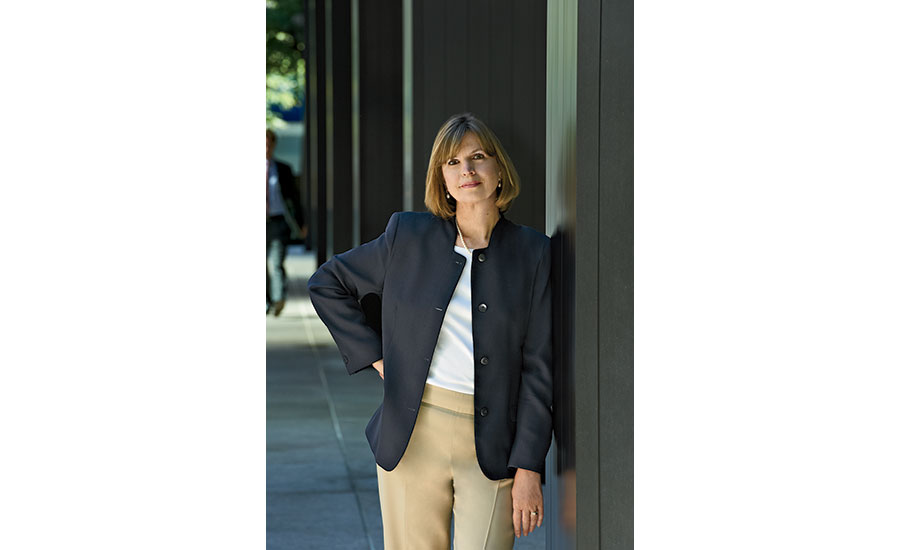In this issue of Architectural Record, we explore the ins and outs of two hugely ambitious new works of architecture, cultural buildings that could not differ more in how they negotiate the balance between form and content, structure and program, art and architecture.
The National Museum of Qatar, by Ateliers Jean Nouvel, is designed as a mind-boggling collision of 539 thin-edged, pale concrete disks—varying in diameter from 46 to 285 feet—that jut out and cut across each other to dazzling effect. Inspired by the desert rose—a mineral formation that lies beneath the sands of the Gulf state—Nouvel created a building of 324,000 usable square feet that snakes and curves around a spacious courtyard. As record managing editor Beth Broome, who traveled to Doha to see it, writes, “It is impossible to imagine what lies behind the walls of cascading disks.”
Yet, as she reports, what lies behind are . . . more cascading disks. There is barely a wall that is not canted, making it extremely difficult to hang conventional works of art or certain objects. Yet the client, Qatar Museums, led by Sheikha Al Mayassa bint Hamad bin Khalifa Al Thani, was seeking an icon, a powerful symbol for the tiny, immensely wealthy country. Though Sheikha Al Mayassa is one of the world’s leading art collectors, this is not an art museum where the record-setting $300 million Gauguin painting she is believed to have bought will reside. Rather, a small collection of artifacts and models of animals dot the galleries, while commissioned films—including one by American artist Doug Aitken called The Coming of Oil—animate the angled walls. The program, which is focused on history and culture, didn’t determine the architecture but evolved with it, over the decade it took to design and build.
Meanwhile, during the same period in New York, the architects of the Shed—Diller Scofidio + Renfro in collaboration with Rockwell Group— were working on their design for a new cultural facility, and they had no idea what would go on inside it. But that was the point: rather than have the architecture dominate, the building had to be so adaptable, it could accommodate future performing and visual artworks that the architects could not yet imagine. What they came up with was a design with a single eye-popping move—and it literally moves: an immense shell, clad in puffy panels of ETFE and wrapping an eight-level building, that can slide out on huge wheels over a plaza to create a vast performance space that could hold an audience of 3,000 people. But the base building itself is strictly utilitarian in its interiors and finishes— though incredibly flexible, with sliding glass panels and movable walls to create highly reconfigurable theatrical spaces and galleries, from intimate to enormous. As critic Joseph Giovannini puts it, “The building is a servant structure without an architectural ego.”
So here we have the alpha and omega of contemporary cultural architecture. The Doha museum may be the last gasp of the Bilbao Effect—a stunning and improbable architectural vision that was so complex to build, it was one of the largest BIM projects in the world (“Every time you move a wall, you move the structure,” said one engineer of the challenge). The Shed, on the other hand, was inspired by a design idea that’s 60 years old—the unbuilt Fun Palace by Cedric Price, a super-flexible skeletal structure with a kit of adaptable parts—and it employs the trusty old gantry technology of seaports to move its shell.
While the Shed and the National Museum of Qatar exemplify two radically different ways for architecture to address culture today, there is a third example in the pages ahead: Richard Gluckman’s remaking of a stately electrical substation into an elegant contemporary-art space for the Brant Foundation in Manhattan. For this project, the architect embraced some of the industrial structure’s old DNA—such as polishing up a steampunk gantry high in one gallery—and used a subtle touch to bring in light and new materials. He has created a remarkably fresh experience, demonstrating that the deft weaving of new with old can be nearly as inventive as starting from scratch—and is one more way to make a mark in the city and look to the future.




Post a comment to this article
Report Abusive Comment